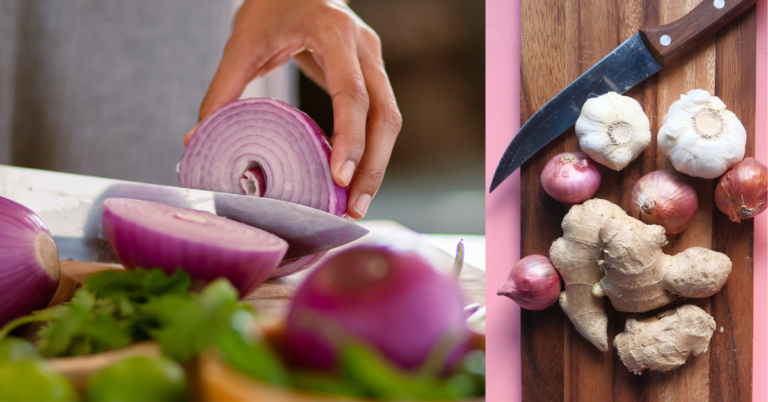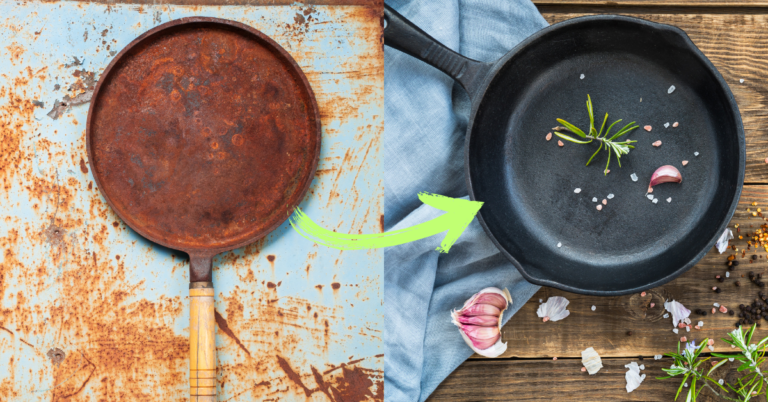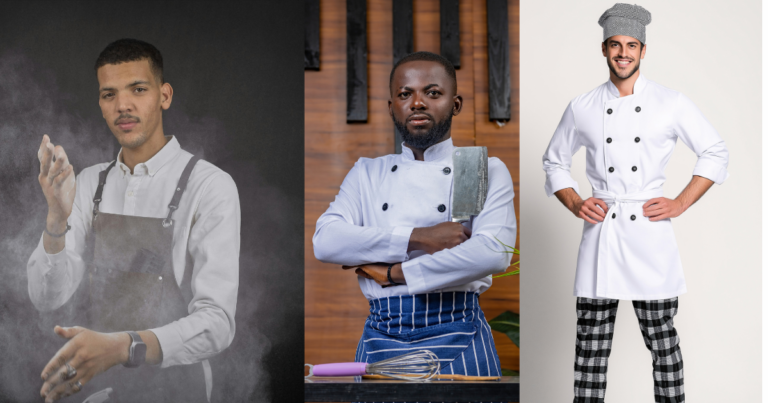How to Choose a Professional Chef Apron for Your Kitchen Needs
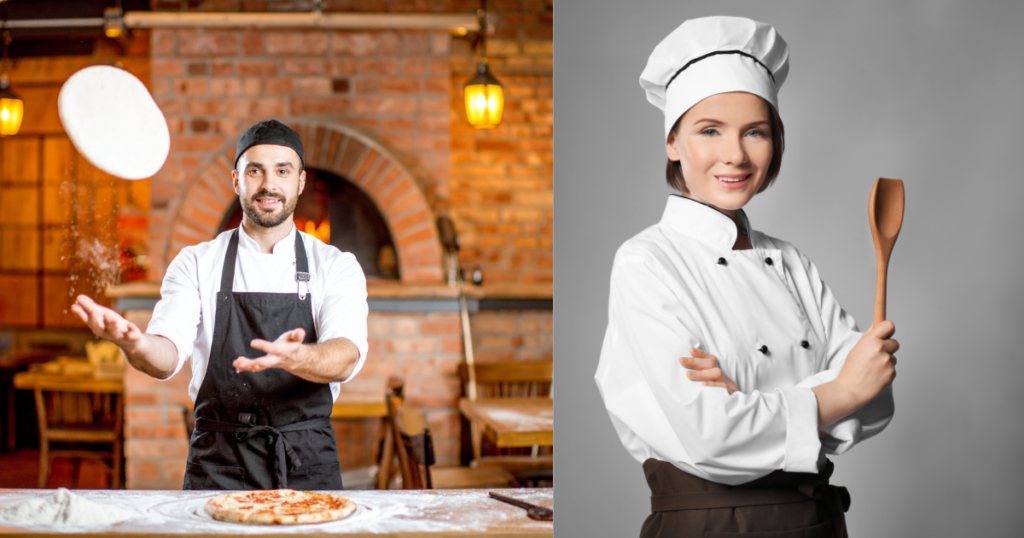
Every chef needs a professional chef’s apron that can handle heat, spills, and long hours.
The wrong apron just adds problems: sore shoulders, ruined uniforms, and lost focus.
In this guide, we’ll show you how to choose the right chef apron.
We’ll also compare styles, such as cross-back aprons, and explain why Hedley & Bennett aprons set the standard.
Why the Right Chef Apron Is More Than Just a Uniform
A professional chef apron is the first layer of protection between you and the chaos of the kitchen.
The right apron also keeps you comfortable, organized, and professional through every shift.
A Good Apron Shields You From Real Hazards
Hot grease, sharp knives, boiling liquids…they all end up flying around in a busy kitchen.
A durable apron reduces the risk of burns, stains, or cuts reaching your clothes and skin.
Comfort Affects How Long You Last on the Line
Lightweight cotton blends work for long prep shifts. Heavy-duty canvas or denim is helpful when you’re constantly moving hot pans and dealing with heavy messes.
The right fabric matters when you’re working 12 hours straight.
Professional Aprons Shape Your Image in the Kitchen
An apron is a part of your professional identity.
Clean, well-fitted aprons show pride in your work and set the tone for how the team and guests see you.
Smart Design Makes You Work Faster
Pockets, straps, and fit directly affect performance. A crossback strap eases shoulder pressure. Extra storage keeps tools close. Small design details can make your shift smoother and less stressful.
Different Types of Professional Chef Aprons You Should Know
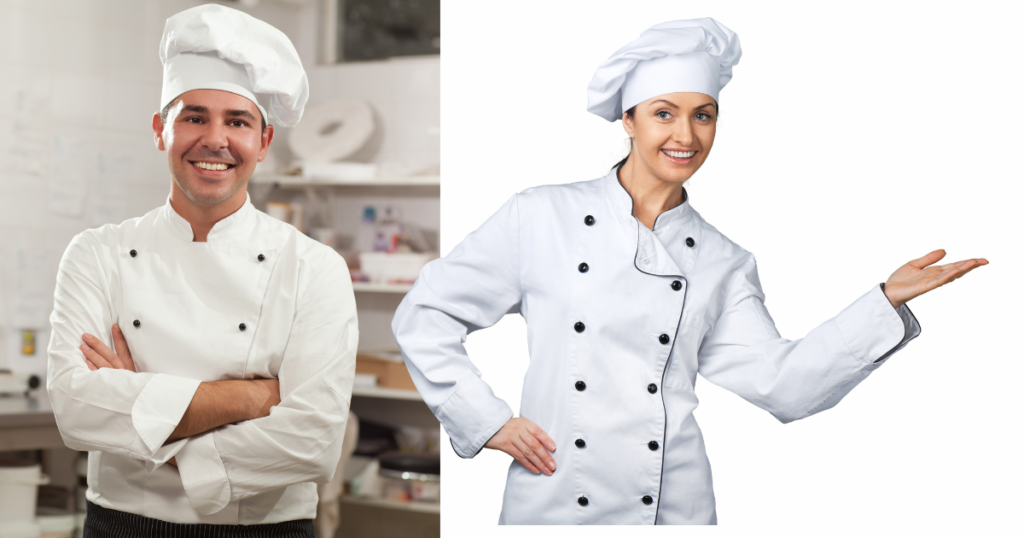
Not all aprons fit every kitchen role. Choosing the right style depends on the amount of coverage you need, the duration of your shifts, and the type of cooking you do. Here’s a breakdown of the most common professional chef aprons.
Bib Aprons Give You Full Protection
Bib aprons cover from the chest to the knees. They’re the classic professional chef apron, used in most kitchens.
Perfect for line cooks and grill stations, they protect against spills, grease, and splashes while offering front pockets for easy access to tools.
Waist Aprons Keep Things Light and Mobile
Waist aprons tie around the hips and offer minimal coverage.
They’re great for pastry chefs, servers, or bar staff who need speed and mobility without the weight of heavy fabric.
Easy to move in, but not ideal for messy stations.
Crossback Aprons Reduce Shoulder Strain
Instead of hanging on your neck, crossback aprons shift weight across your shoulders. This prevents neck pain during long shifts.
Many chefs prefer them for all-day comfort.
A Hedley & Bennett crossback apron is a popular pick, known for combining durability with thoughtful design.
Pinafore Aprons Blend Function With Style
Pinafore aprons slip on like a tunic, offering modern style with solid coverage. They’ve become trendy in open kitchens and for chefs who interact with guests.
They strike a balance between practicality and a polished look.
Key Features to Look For in the Best Chef Apron

A professional chef’s apron is more than fabric. The right features decide if it protects you, keeps you comfortable, and lasts in a tough kitchen.
Here’s what to check before you buy.
Fabric Durability Matters
Choose sturdy fabrics such as cotton, denim, canvas, or their blends. These hold up against heat, spills, and daily washes. Thin fabrics wear out fast and fail in busy kitchens.
Comfort and Fit for Long Shifts
Look for adjustable straps. Crossback designs ease pressure on the neck, while neck straps are lighter but can strain during extended hours. Comfort keeps you moving without distraction.
Pocket Placement for Tools
Pockets add utility. Place thermometers, pens, or towels within easy reach. A well-designed apron saves time and reduces the need for unnecessary trips across the kitchen.
Easy Cleaning Saves Time
Kitchens are messy. Stain-resistant or machine-washable aprons save effort after a long shift. Avoid materials that shrink or fade after frequent washes.
Heat and Spill Resistance Protects You
Flame-resistant or coated fabrics provide added safety, shielding against hot oil splashes and minor burns. For grill or sauté stations, this feature is essential.
Quick Checklist for Chef Aprons
| Feature | Why It Matters |
| Durable fabric | Withstands heat, spills, and daily use |
| Adjustable straps | Keeps comfort during long shifts |
| Utility pockets | Easy access to tools and towels |
| Stain resistance | Saves cleaning time and effort |
| Heat protection | Shields from burns and splashes |
Top Recommended Crossback Aprons (Hedley & Bennett)
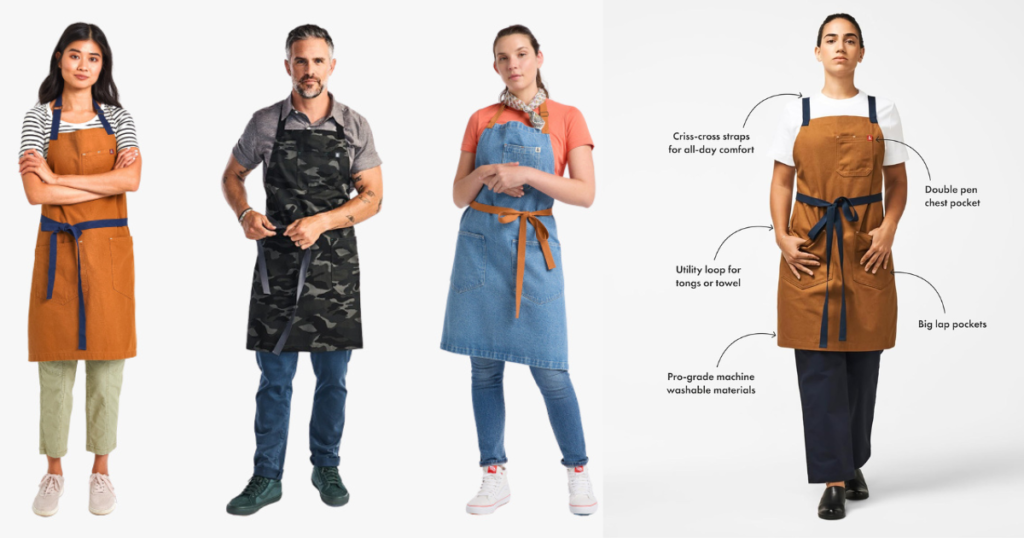
Hedley & Bennett aprons are a favorite in professional kitchens. They combine premium fabrics, strong stitching, and a stylish design that works in both back-of-house and open kitchens. Built for chefs, line cooks, and serious home cooks, these aprons strike a better balance of form and function than most budget options.
Why Hedley & Bennett is Popular
The brand is recognized for its high-quality fabrics, including cotton, canvas, and denim. Each apron feels solid yet breathable.
Their clean, modern look also makes them a go-to choice for open kitchens where presentation is crucial. Unlike generic aprons, Hedley & Bennett aprons are made with kitchens in mind, not just casual cooking.
Crossback Design for Comfort
The Hedley & Bennett crossback apron is designed for long shifts. Crossback straps distribute weight across your shoulders, reducing neck strain during 10–14-hour days.
Many chefs say this design makes a noticeable difference when compared to traditional neck straps.
Durability and Comfort
These aprons withstand constant washing, heavy stains, and daily wear. The reinforced stitching and sturdy fabrics of these aprons last significantly longer than those of cheaper aprons.
Comfort is another plus – light enough to move freely but tough enough to withstand hot kitchens.
Downsides Of Hedley & Bennett Aprons
The main drawback is the price. Hedley & Bennett aprons cost more than standard options. But many chefs see them as an investment.
Instead of replacing cheaper aprons every few months, one premium apron can last for years.
Who Should Choose Hedley & Bennett?
- Line cooks need durable aprons that keep up with long shifts.
- Chefs in open kitchens who want gear that looks sharp on the floor.
- Home chefs who prefer premium, long-lasting kitchen tools.
How to Choose the Right Apron for Your Role

Not every kitchen role has the same demands. The best chef apron for you depends on how and where you work.
Choosing an apron that matches your role improves comfort, safety, and performance.
Line Cooks: Built for Heavy Use
Line cooks need aprons that can take a beating. Look for strong fabrics, such as canvas or denim. Utility pockets are essential for storing thermometers, pens, and small tools.
Crossback straps help reduce strain during long shifts.
Head Chefs: Comfort Meets Professionalism
Head chefs spend long hours on their feet and in the spotlight. A professional-looking apron with adjustable straps ensures a comfortable fit.
Premium fabrics, such as cotton blends or Hedley & Bennett aprons, keep you sharp and polished while remaining practical and durable.
Pastry Chefs: Lightweight and Clean-Friendly
Pastry work can get messy fast. Lightweight aprons are easier to wash and dry. Choose materials that resist stains from flour, sugar, or butter.
Waist aprons or slim bib aprons allow for unrestricted movement in tight pastry spaces.
Front-of-House Chefs: Style That Works Hard
Chefs in open kitchens or front-of-house roles require aprons that strike a balance between function and presentation.
Stylish options, such as crossback aprons or designs by Hedley & Bennett, give a polished look. Pick colors and designs that align with the restaurant’s brand.
Quick Care & Maintenance Tips
Take care of your apron, and it will take care of you. Simple habits keep it clean, durable, and comfortable for daily use.
- Wash your apron after every shift to remove grease and stains.
- Use mild detergent and avoid harsh bleach to preserve fabric strength.
- Hang aprons to air dry. This prevents shrinkage and keeps straps from twisting.
- Rotate between two or more aprons if possible. This extends their lifespan.
- Replace worn aprons before they lose their protective properties or appear unprofessional.
Small steps add up. With regular care, your apron will last longer, look better, and stay comfortable through every shift.
Final Take: The Apron Is Your First Line of Defense
Your knives, pans, and tools matter. But your apron is what shields you before anything else. Think of a professional chef’s apron as your daily armor. It takes the grease, the heat, and the stains so you can focus on your craft.
Start with one apron built to last, then upgrade when you’re ready.
If you want the best chef apron for comfort, durability, and performance, explore detailed reviews to find the apron that works as hard as you do.

